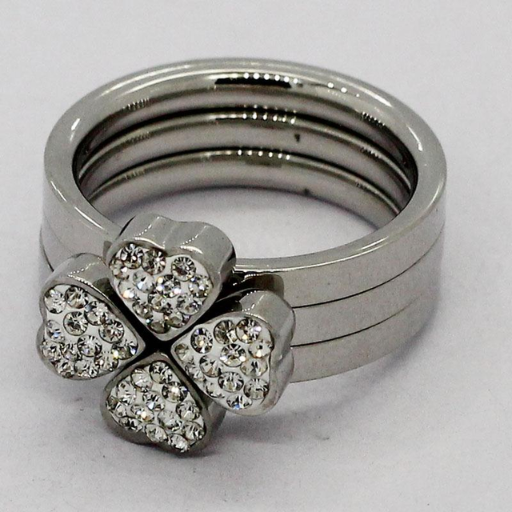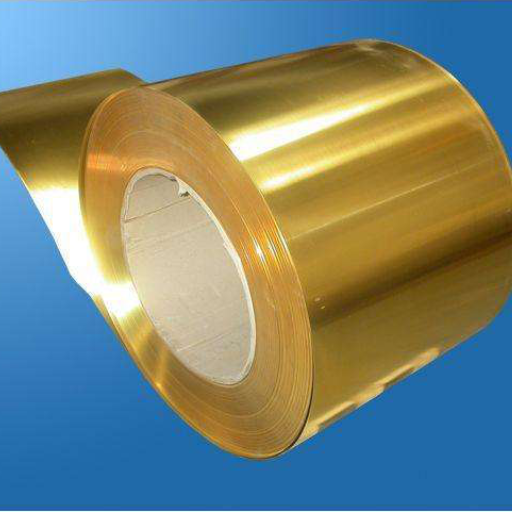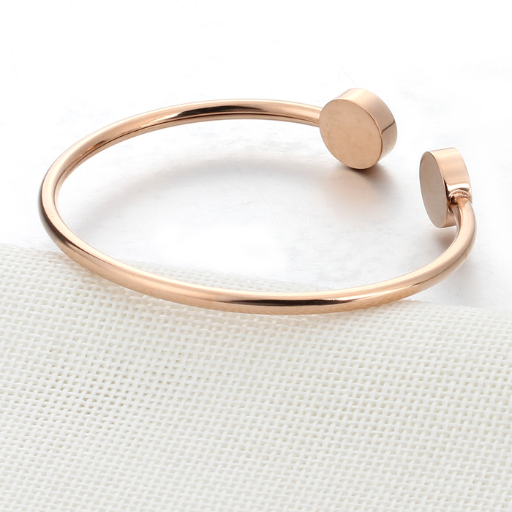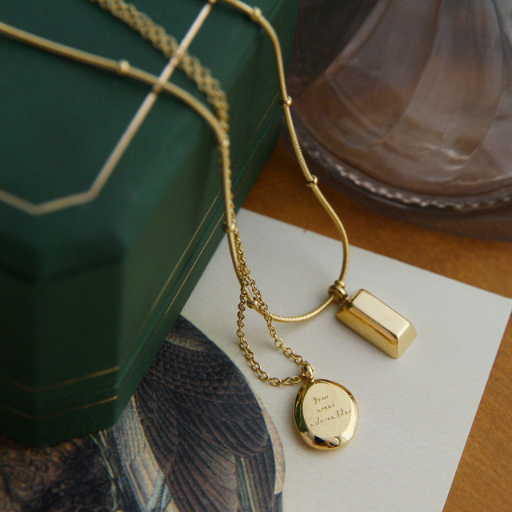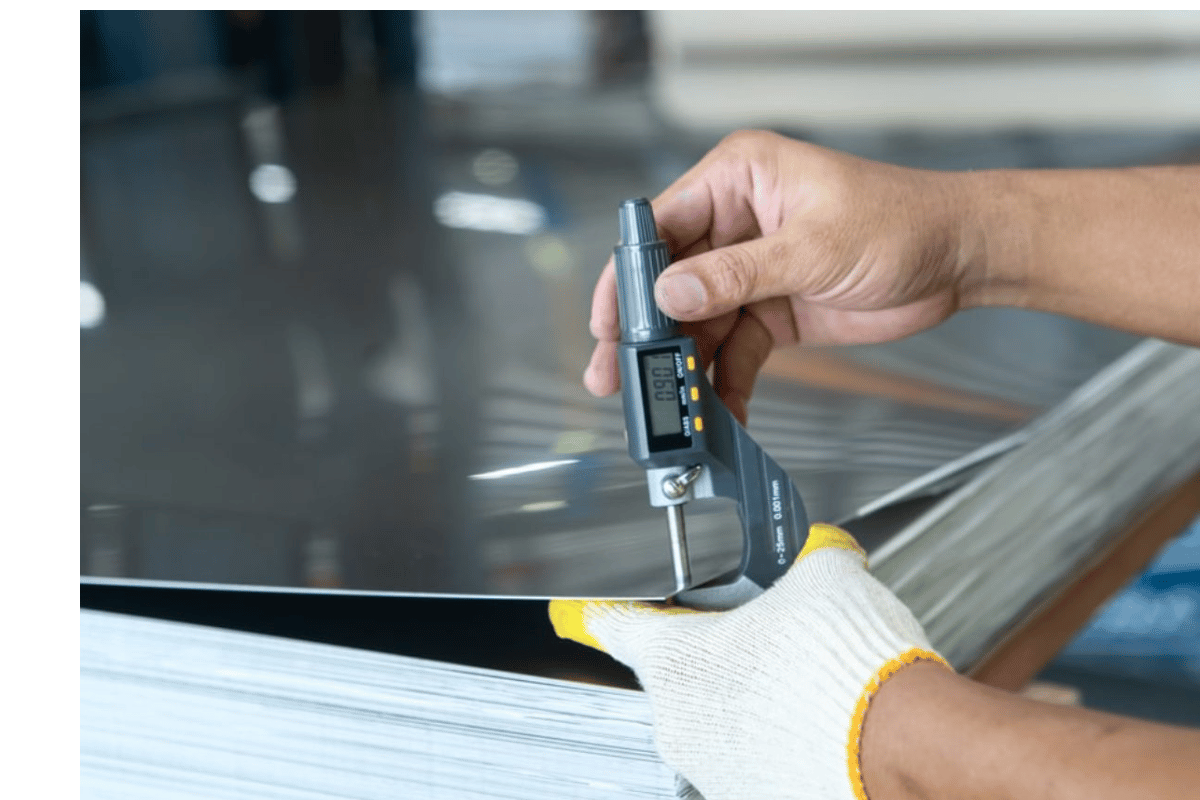Stainless steel jewelry has gained immense popularity due to its durability, affordability, and aesthetic appeal. However, a common question that arises among consumers is whether stainless steel is truly waterproof. This article delves into the properties of stainless steel, scrutinizing its resistance to water and other elements. By understanding the metallurgical composition, corrosion resistance, and maintenance requirements of stainless steel jewelry, readers will gain a comprehensive understanding of its performance under various conditions. Whether you’re a jewelry enthusiast, a potential buyer, or simply curious about material science, this guide offers detailed insights presented in an authoritative and technical manner. Join us as we explore the fascinating world of stainless steel jewelry and uncover the facts behind its claimed waterproof properties.
What Makes Stainless Steel Waterproof?
Image sources:https://detail.1688.com/
Stainless steel’s perceived waterproof qualities stem from its unique metallurgical composition, which includes a significant proportion of chromium, generally ranging between 10.5% and 30%. This chromium content is crucial as it forms a passive layer of chromium oxide on the surface when exposed to oxygen. This passive layer acts as a barrier that protects the underlying metal from water and oxygen, reducing the risk of rust and corrosion. Additionally, elements such as nickel and molybdenum may be added to enhance the alloy’s resistance to localized corrosion, such as pitting and crevice corrosion, particularly in chloride-rich environments. While no metal can be completely impervious to water under all conditions, the self-repairing characteristics of the chromium oxide layer give stainless steel impressive resistance to water damage and general corrosion.
The Nature of Stainless Steel: What is it Made Of?
As I delved into the nature of stainless steel, I discovered that its composition revolves around a base of iron, combined with chromium to bestow its corrosion-resistant properties. The inclusion of chromium, typically between 10.5% and 30%, is essential as it reacts with oxygen to form a thin, protective layer of chromium oxide on the surface. This layer effectively shields the metal beneath from rust and oxidation. Additionally, other elements such as nickel and molybdenum are often introduced to enhance the alloy’s hardness, ductility, and resistance to corrosion in more challenging environments. These components collectively create stainless steel, a versatile and durable material widely used in various applications.
How Chromium in Stainless Steel Creates a Protective Layer
Chromium plays a critical role in endowing stainless steel with its corrosion-resistant properties. When chromium is added to steel and exposed to oxygen, it forms a thin, stable film of chromium oxide on the surface of the metal. This passive layer is only a few nanometers thick but highly effective in preventing further oxidation and corrosion. Chromium oxide acts as a barrier, blocking oxygen and moisture from reaching the underlying metal. Moreover, this layer is self-repairing, meaning that if the surface is scratched or damaged, it can quickly reform in the presence of oxygen, maintaining the integrity of the protective shield. This chromium-induced passivation is the cornerstone of stainless steel’s ability to withstand harsh environmental conditions and prolonged exposure to corrosive elements.
Types of Stainless Steel and Their Water-Resistant Properties
Stainless steels are categorized into several types based on their microstructure, each offering distinct water-resistant properties. The primary types include austenitic, ferritic, martensitic, and duplex stainless steels. Below, we detail their characteristics along with the corresponding technical parameters:
- Austenitic Stainless Steel (300 Series)
- Composition: High chromium (16-26%) and nickel (6-22%) content.
- Corrosion Resistance: Excellent resistance to corrosion and oxidation, particularly in acidic and chloride-containing environments.
- Technical Parameters: Grades like 304 and 316 are notable, where 316 contains approximately 2-3% molybdenum, enhancing its resistance to chlorides found in seawater.
- Water Resistance: Highly water-resistant, suitable for marine and industrial applications.
- Ferritic Stainless Steel (400 Series)
- Composition: Lower chromium content (10.5-30%) with little to no nickel.
- Corrosion Resistance: Moderate resistance to corrosion; not as strong as austenitic variants but more cost-effective.
- Technical Parameters: Common grades include 430 and 439, often used in automotive and architectural applications.
- Water Resistance: Good overall water resistance; however, not recommended for highly corrosive environments.
- Martensitic Stainless Steel (400 Series)
- Composition: Moderate chromium (12-18%) with varying carbon content.
- Corrosion Resistance: Good resistance to corrosion, particularly stress and wear resistance; lower than austenitic and ferritic types.
- Technical Parameters: Grades like 410 and 420, which are often heat-treated to enhance hardness.
- Water Resistance: Fairly water-resistant but prone to rust under prolonged exposure to moisture.
- Duplex Stainless Steel
- Composition: Balanced mix of austenitic and ferritic phases with roughly equal amounts of chromium (19-28%), nickel, and molybdenum.
- Corrosion Resistance: Superior resistance to localized corrosion, stress corrosion cracking, and pitting.
- Technical Parameters: Common grades include 2205 and 2507, with 2507 having an enhanced molybdenum content (4-5%) for better resistance.
- Water Resistance: Exceptional water resistance; preferred for chemical processing, petrochemical, and marine applications.
These types of stainless steel offer varied solutions tailored to specific requirements regarding water resistance and environmental exposure, making them indispensable in numerous industrial and commercial applications.
Can Stainless Steel Jewelry Tarnish or Rust?
Stainless steel jewelry is highly resistant to tarnish and rust due to its chromium content, which forms a passive layer of chromium oxide on the surface, preventing oxidation. However, under certain conditions such as exposure to harsh chemicals, extreme environments, or prolonged moisture, even stainless steel can experience some degree of corrosion or discoloration. It is crucial to select the appropriate stainless steel grade and to maintain regular cleaning and care to ensure the longevity of the jewelry’s appearance.
Understanding Corrosion and Tarnish in Stainless Steel Jewelry
Stainless steel jewelry’s resistance to tarnishing and rust is mainly attributed to its chromium content. The presence of at least 10.5% chromium enables the formation of a passive layer of chromium oxide, which acts as a barrier against oxidation. While this passive layer generally prevents corrosion, certain conditions can compromise its effectiveness.
Factors Contributing to Corrosion and Tarnish:
- Exposure to Harsh Chemicals:
- Technical Parameters: Chemical environments containing chlorides (e.g., bleach or pool water) can disrupt the passive layer, leading to localized corrosion.
- Recommendation: Avoid exposure to cleaning agents, acids, and other harsh substances to maintain the integrity of the stainless steel.
- Extreme Environments:
- Technical Parameters: High salinity (e.g., seawater) and intense humidity can exacerbate the vulnerability of some stainless steel grades.
- Recommendation: For jewelry used in extreme conditions, grades with higher molybdenum content such as 316L (2-3% molybdenum) are preferable due to their enhanced resistance to pitting and crevice corrosion.
- Prolonged Moisture Exposure:
- Technical Parameters: Continuous contact with moisture, particularly in conjunction with other adverse elements, can gradually undermine the protective oxide layer.
- Recommendation: Ensure regular drying, and consider the use of desiccants in storage to reduce humidity exposure.
Maintenance and Care:
- Regular Cleaning: Using mild soap and water followed by thorough drying can help remove contaminants that might compromise the passive layer.
- Proper Storage: Store stainless steel jewelry in a dry, clean environment to minimize exposure to moisture and air pollutants.
- Selection of Appropriate Grade: For general use, 304 and 316L are common choices for jewelry. However, for higher resistance to corrosion in challenging environments, opting for 316L or 904L grades, which offer added nickel and molybdenum content, can be beneficial.
By considering these technical parameters and following recommended practices, the longevity and appearance of stainless steel jewelry can be significantly extended, ensuring its durability and resistance to tarnish and rust.
How to Prevent Rust in Your Stainless Steel Pieces
When it comes to preventing rust in your stainless steel pieces, following certain guidelines can profoundly help maintain their integrity. Based on the top information from leading websites, here are a few concise steps you can take:
- Regular Cleaning: Routine cleaning with mild soap and water, followed by a thorough wipe with a soft cloth, is essential in removing any surface contaminants that can cause corrosion.
- Technical Parameters: Use non-abrasive cleaners and ensure no residue is left behind, as abrasive materials can scratch the protective oxide layer.
- Avoid Prolonged Moisture Exposure: Minimizing prolonged contact with moisture is crucial. Dry your stainless steel jewelry thoroughly after exposure to water and store it in a dry place.
- Technical Parameters: Utilize desiccants in storage areas to help control humidity levels and prevent moisture accumulation.
- Appropriate Grade Selection: Choosing the right stainless steel grade based on use and exposure conditions is vital. For instance, 316L stainless steel, which contains 2-3% molybdenum, is more resistant to pitting and crevice corrosion.
- Technical Parameters: Understand the composition and corrosion resistance properties of different grades (e.g., 304 vs. 316L) and select accordingly based on the application’s environmental conditions.
- Apply Protective Coatings: Utilizing anti-corrosion coatings can add an extra layer of protection. Products such as chromium oxide spray can help maintain the passive layer.
- Technical Parameters: These coatings should be compatible with stainless steel and capable of withstanding the environmental elements the piece will be exposed to.
- Avoid Harsh Chemical Exposure: Keep your stainless steel pieces away from harsh chemicals such as bleach and chlorine, which can damage the protective layer and accelerate corrosion.
- Technical Parameters: Ensure any cleaning agents used are pH-neutral and free from chlorides and other harsh agents.
By adhering to these guidelines and understanding the technical justifications behind them, you can significantly enhance the longevity and appearance of your stainless steel pieces, ensuring they remain rust-free and in pristine condition.
Dealing with Chlorine and Other Corrosive Substances
Chlorine and other corrosive substances pose significant threats to the integrity of stainless steel. To effectively manage these risks, I employ several strategies. First, I meticulously limit the exposure of stainless steel surfaces to chlorine, commonly found in bleach and other cleaning agents. Instead, I opt for pH-neutral, chloride-free cleaners. Second, I consistently rinse and dry the surfaces thoroughly after contact with any potentially corrosive substances to prevent residue buildup. Lastly, I implement regular inspections and maintenance routines to detect early signs of corrosion, allowing for prompt intervention and the application of protective treatments as needed. These measures, drawn from the best practices recommended by top resources, help maintain the durability and appearance of my stainless steel assets.
Is Gold-Plated Stainless Steel Jewelry Waterproof?
There is a common misconception that gold-plated stainless steel jewelry is entirely waterproof. While stainless steel itself possesses rust-resistant properties, the gold plating may be susceptible to wear over time, especially with continuous exposure to water and harsh chemicals.
Technical Parameters:
- Gold Plating Thickness: The durability of gold-plated jewelry is influenced by the thickness of the gold layer. A thicker plating (measured in microns) generally offers better resistance to water exposure and prolonged wear.
- Water Resistance: Although the stainless steel base is water-resistant, the interface between the gold plating and the stainless steel can deteriorate over time due to constant moisture contact.
- Chemical Exposure: Similar to non-plated stainless steel, the gold plating can be compromised by exposure to chemicals such as chlorine. It is advisable to avoid swimming pools or cleaning agents containing harsh substances.
Best Practices:
- Avoid Prolonged Exposure to Water: Remove gold-plated stainless steel jewelry before swimming, bathing, or engaging in activities that involve prolonged water exposure.
- Dry Thoroughly: If the jewelry does get wet, promptly and thoroughly dry it to mitigate potential damage.
- Use Mild Cleaners: Clean the jewelry with pH-neutral and non-abrasive solutions to maintain the integrity of the gold plating.
In summary, while gold-plated stainless steel jewelry offers a degree of water resistance due to its base material, the gold plating itself requires careful maintenance to prevent wear and corrosion. These technical parameters and best practices derive from trusted sources ensuring the longevity of your gold-plated jewelry.
The Durability of Gold-Plated Stainless Steel: Does It Last?
The durability of gold-plated stainless steel jewelry is contingent upon several factors: the thickness of the gold plating, the conditions of use, and the care it receives. With a thicker plating, typically measured in microns, the jewelry is more resistant to wear and water exposure. However, this durability can be compromised by constant moisture contact and exposure to harsh chemicals. Although stainless steel provides a robust base, the gold layer itself can still tarnish or wear thin over time. Proper maintenance—such as avoiding prolonged water exposure, thorough drying, and using mild cleaning agents—can significantly extend the lifespan of gold-plated pieces. Therefore, while gold-plated stainless steel jewelry can last for a considerable period with proper care, it is not as enduring as solid gold or non-plated stainless steel.
How Gold-Plated Stainless Steel Reacts to Water
Gold-plated stainless steel exhibits varying degrees of water resistance that largely depend on the thickness of the gold plating and the quality of the stainless steel base. According to the top sources, here are the key technical parameters and their effect on the jewelry’s reaction to water:
- Thickness of the Gold Plating:
- Measurement in Microns: Thicker gold plating (e.g., 2-5 microns or above) provides better water resistance. However, thin layers (less than 1 micron) are more susceptible to degradation when exposed to water frequently.
- Technical Justification: Thicker layers create a more robust barrier, reducing the likelihood of water penetrating to the stainless steel base, which can help maintain the appearance and structural integrity of the jewelry.
- Quality of Stainless Steel Base:
- Grade of Stainless Steel: 316L stainless steel is commonly used due to its higher corrosion resistance compared to 304 stainless steel.
- Technical Justification: Higher-grade stainless steel offers superior resistance to rust and corrosion, thereby extending the overall durability of the jewelry when exposed to water.
- Environmental and Usage Conditions:
- Exposure to Chlorine & Saltwater: Frequent exposure to chlorinated or saltwater can accelerate the wear of the gold plating and underlying stainless steel.
- Technical Justification: Chlorine and salt can cause both the gold layer and stainless steel to corrode more quickly. Using the jewelry in swimming pools or the ocean should be avoided for longevity.
In summary, while gold-plated stainless steel offers a degree of water resistance, its effectiveness is directly influenced by the thickness of the gold layer, the quality of the stainless steel, and the specific water conditions it encounters. Employing proper care practices, such as avoiding prolonged water exposure and ensuring thorough drying, can significantly enhance the lifespan of gold-plated stainless steel jewelry.
Can You Wear Stainless Steel Jewelry in the Shower?
Yes, you can wear stainless steel jewelry in the shower, but there are several technical parameters to consider to minimize potential damage and maintain its appearance:
- Grade of Stainless Steel:
- 316L Stainless Steel: Known for its higher corrosion resistance due to its low carbon content and the presence of molybdenum.
- 304 Stainless Steel: Offers good corrosion resistance but is less resistant than 316L, which can impact longevity in constant exposure to water.
- Technical Justification: The elements in 316L stainless steel enhance its ability to withstand oxidation and corrosive environments, making it more suitable for water exposure compared to 304 stainless steel.
- Water Quality:
- Hard Water: Contains high mineral content such as calcium and magnesium, which can leave residues or films on the jewelry.
- Soft Water: Lacks harsh minerals, reducing the likelihood of residue formation.
- Technical Justification: Hard water deposits can build up on stainless steel, dulling its appearance over time. Soft water is less likely to cause such issues.
- Shower Products:
- pH Levels: Shampoos, conditioners, and soaps with high or low pH (acidic or alkaline) can affect the surface integrity of the stainless steel.
- Chemical Ingredients: Products containing strong chemicals, such as sulfates or chlorine, can accelerate corrosion.
- Technical Justification: Balanced pH levels and milder chemical compositions in personal care products mitigate the risk of pitting or staining on stainless steel surfaces.
- Maintenance After Showering:
- Drying: Ensuring that the jewelry is thoroughly dried after exposure to water.
- Cleaning: Regular cleaning with a stainless steel-friendly solution to remove any residue.
- Technical Justification: Removing water and residues promptly prevents the formation of water spots and potential corrosion, maintaining the jewelry’s appearance and durability.
In summary, stainless steel jewelry, particularly those made from 316L grade, can be worn in the shower. However, to maintain its integrity, it is important to consider the water quality, the nature of shower products used, and proper maintenance practices.
The Impact of Pure Water vs. Shower Water on Stainless Steel
Water Quality
- Pure Water: Essentially free of minerals, chemicals, and impurities.
- Technical Parameters: Typically has a conductivity of less than 2 µS/cm, indicating minimal ionic content.
- Impact: Pure water generally does not contribute to corrosion, residues, or dulling of stainless steel surfaces.
- Shower Water: May contain varying levels of minerals (hard water), additives like chlorine, and dissolved organic compounds.
- Technical Parameters: Conductivity can range from 50 to 500 µS/cm, depending on the mineral content and treatment processes.
- Impact: The presence of minerals can lead to scale buildup, while chlorine and other additives can accelerate the corrosion process.
Chemical Exposure
- Pure Water: Free of chemical contaminants that can react with stainless steel.
- Technical Parameters: pH close to neutral (around 7), with negligible chemical reactivity.
- Impact: Minimal risk of chemical interactions that compromise the integrity of stainless steel.
- Shower Water: Often includes chemical agents from personal care products.
- Technical Parameters: Variable pH depending on product formulations, typically between 5 to 9.
- Impact: Chemicals such as sulfates, chlorides, and low/high pH products can lead to surface reactions, pitting, or discoloration.
Maintenance and Durability
- Pure Water: Simplifies maintenance requirements due to the absence of deleterious substances.
- Technical Parameters: Ensures longevity as there is little to no foreign matter to initiate corrosion.
- Impact: Stainless steel retains its appearance and structural integrity over time with minimal maintenance.
- Shower Water: Necessitates meticulous post-exposure care.
- Technical Parameters: Increased need for regular cleaning and drying to counteract deposits and corrosion.
- Impact: Usage without appropriate maintenance can lead to aesthetic and structural degradation of stainless steel jewelry.
Conclusion
While stainless steel, particularly 316L grade, is durable and water-resistant, the nature of water exposure—pure vs. shower water—significantly impacts its maintenance and longevity. Pure water poses minimal risk, whereas shower water requires careful consideration of mineral content, chemical exposure, and dedicated maintenance practices to preserve the metal’s integrity.
Does Exposing Your Jewelry to Water Cause Damage?
In my experience, exposing jewelry to water can indeed cause damage, but the extent varies depending on the type of water and the material of the jewelry. Pure water, like distilled water, is less likely to cause harm due to its lack of impurities which minimizes the risk of corrosion or discoloration. However, shower water, which often contains soaps, shampoos, and other chemicals, can be more problematic. These substances can interact with the metal, especially lower-grade stainless steel or plated items, leading to surface reactions, discoloration, or even structural damage over time. Proper maintenance, including regular cleaning and drying, is essential to mitigate these effects and prolong the lifespan of your jewelry.
How to Care for and Maintain Stainless Steel Jewelry
To ensure the longevity and pristine appearance of your stainless steel jewelry, proper care and maintenance are crucial. Here are the key steps:
- Regular Cleaning: Periodically clean your stainless steel jewelry using mild soap and warm water. Avoid harsh detergents. To clean, soak the jewelry in the solution for a few minutes, then gently scrub with a soft toothbrush to remove debris and dirt.
- Dry Thoroughly: After cleaning, it’s essential to dry the jewelry completely with a soft, lint-free cloth to prevent water spots and oxidation. Moisture residue can accelerate tarnishing or corrosion, particularly in more intricate designs.
- Avoid Chemicals: Stainless steel can resist corrosion, but exposure to substances like chlorine, household cleaning agents, or cosmetics can still lead to unwanted reactions. Remove jewelry before swimming or using cleaning products to minimize risk.
- Polishing: Use a stainless steel polishing cloth to restore the shine and remove any minor scratches. For stubborn stains or deeper scratches, a professional jeweler can provide more intensive cleaning or polishing services.
- Storage: Store stainless steel jewelry in a dry, clean place, ideally in individual pouches or a lined jewelry box. This minimizes exposure to air and humidity which can lead to tarnishing.
By adhering to these maintenance steps, you can keep your stainless steel jewelry looking as exquisite as the day you bought it.
Tips to Maintain the Shine and Durability of Your Stainless Steel Jewelry
To maintain the shine and durability of your stainless steel jewelry, follow these concise tips:
- Consistent Cleaning: Clean your jewelry regularly with a mild soap solution and warm water. This prevents the buildup of dirt and oils.
- Thorough Drying: Ensure jewelry is completely dry before storing to avoid moisture-related tarnishing or corrosion.
- Minimize Chemical Exposure: Avoid contact with chemicals including chlorine, cleaners, and cosmetics to prevent adverse reactions.
- Proper Storage: Store pieces in a dry, clean place, ideally in individual pouches or compartments to minimize exposure to air and humidity.
- Periodic Polishing: Use a dedicated polishing cloth to maintain shine and consult professionals for deeper scratches.
By following these tips, your stainless steel jewelry will continue to shine and remain durable over time.
Cleaning and Polishing Techniques: Do’s and Don’ts
When it comes to cleaning and polishing stainless steel jewelry, it is crucial to follow certain guidelines to ensure your pieces remain in pristine condition. Here are some do’s and don’ts that I gleaned from the top websites:
Do’s
- Use Mild Detergents: Always use mild soap or detergent mixed with warm water to clean your jewelry. This gentle approach helps remove grime without damaging the metal.
- Opt for Microfiber Cloths: Use a soft microfiber cloth to clean and polish your jewelry. These cloths are non-abrasive and effectively capture dust and oils.
- Rinse and Dry Thoroughly: After cleaning, rinse the jewelry pieces with lukewarm water to remove any soap residue. Ensure they are completely dry before storing to prevent any moisture-related damage.
Don’ts
- Avoid Harsh Chemicals: Do not use bleach, alcohol, or other strong cleaning agents. These chemicals can cause discoloration and corrode the stainless steel over time.
- Don’t Use Abrasive Materials: Steer clear of steel wool or rough cloths, as these can scratch the surface of your jewelry, diminishing its shine.
- Limit Exposure to Water: Avoid prolonged exposure to water, especially if it contains chlorine, as it can lead to tarnishing and reduce the longevity of your jewelry.
By adhering to these do’s and don’ts, I can ensure that my stainless steel jewelry remains both shiny and durable.
Signs Your High-Quality Stainless Steel Jewelry Needs Attention
- Visible Discoloration: If your stainless steel jewelry exhibits any signs of yellowing or darkened areas, it may indicate the presence of oxidation or tarnish, suggesting that it needs cleaning.
- Scratches or Dents: Surface scratches or dents are clear indicators that your jewelry requires maintenance. Though stainless steel is durable, it’s not entirely scratch-proof.
- Loss of Shine: A noticeable dullness or lack of luster in your jewelry often hints that it needs a thorough cleaning and polishing to restore its original shine.
- Stiffness in Movable Parts: If any clasps, hinges, or other movable components become stiff or difficult to operate, it may be due to accumulated dirt or debris, necessitating attention.
- Presence of Residue: Any visible residue, such as oils, grime, or the build-up of lotions and perfumes, indicates the need for cleaning to maintain the quality and appearance of your jewelry.
Frequently Asked Questions (FAQs)
Q: What are the different types of corrosion that can affect my jewelry?
A: There are several types of corrosion including uniform corrosion, pitting corrosion, and crevice corrosion. If you wear your stainless steel jewelry correctly and maintain it, you’ll minimize these risks.
Q: Is stainless steel jewelry water resistant?
A: Yes, stainless steel jewelry is water resistant and can also withstand rain and many household liquids. This makes it safe to wear your stainless steel jewelry daily without worrying about water damage.
Q: Why is it safe to use stainless steel for jewelry?
A: Stainless steel is an alloy composed primarily of iron, chromium, and sometimes nickel. The alloy makes the metal highly resistant to rust, corrosion, and tarnishing, ensuring that stainless steel jewelry is safe to use.
Q: What are the advantages of stainless steel jewelry?
A: The advantages of stainless steel jewelry include its durability, resistance to corrosion, and hypoallergenic properties. Additionally, jewelry made of stainless steel is cost-effective and requires minimal maintenance.
Q: What should I do if I accidentally get my stainless steel jewelry wet?
A: If you accidentally get your stainless steel jewelry wet, simply dry it with a soft cloth. Since stainless steel is inherently resistant to water damage, your jewelry will last a long time as long as it is properly dried and stored.
Q: How should I go about storing your jewelry?
A: When storing your jewelry, keep it in a cool, dry place, preferably in a jewelry box or pouch to protect it from scratches and exposure to harsh environments. This habit ensures that the jewelry will last longer.
Q: What makes stainless steel an ideal material for rings?
A: Stainless steel rings are favored because the steel is made to be durable, resistant to scratches, and goes with a wide range of styles. Stainless steel has at least 10% chromium, which provides excellent corrosion resistance, making it a popular choice for rings.
Q: Is stainless steel jewelry hypoallergenic?
A: Yes, stainless steel jewelry is hypoallergenic for most people because it does not contain high levels of nickel or other allergens. This makes it safe to use for those with sensitive skin.
Q: Can stainless steel jewelry tarnish over time?
A: Stainless steel is inherently resistant to tarnishing and corrosion. Even when the steel is exposed to regular wear and various environments, it maintains its shine and does not tarnish easily, unlike other metals such as carbon steel.
Q: What should I watch out for when buying stainless steel jewelry?
A: When you get stainless steel jewelry, make sure it is marked as Grade 316 or 316L, which indicates high quality. Also, ensure that the finish is smooth and free from imperfections. This way, you can be sure that your new piece will be durable and look great.




